-
Archives
- December 2024
- November 2024
- January 2024
- December 2023
- October 2023
- January 2023
- October 2022
- August 2022
- May 2022
- April 2022
- October 2021
- September 2021
- April 2021
- March 2021
- December 2020
- November 2020
- October 2020
- September 2020
- May 2020
- November 2019
- August 2019
- October 2018
- August 2018
- June 2018
- March 2018
- December 2017
- October 2017
- September 2017
- May 2017
- April 2017
- February 2017
- January 2017
- October 2016
- September 2016
- August 2016
- June 2016
- February 2016
- December 2015
- November 2015
- September 2015
- August 2015
- July 2015
- June 2015
- May 2015
- April 2015
- March 2015
- January 2015
- December 2014
- October 2014
- July 2014
- May 2014
- April 2014
- March 2014
- February 2014
- January 2014
- December 2013
- November 2013
- October 2013
- September 2013
- July 2013
- June 2013
- May 2013
- April 2013
- March 2013
- January 2013
- December 2012
- November 2012
- September 2012
- July 2012
- June 2012
- May 2012
- April 2012
- March 2012
- February 2012
- January 2012
- December 2011
- November 2011
- October 2011
- September 2011
- August 2011
- July 2011
- June 2011
- May 2011
- April 2011
- March 2011
- February 2011
- January 2011
- March 2010
- January 2009
-
Meta
Baseball Coaching – the RAPA Method – Repetitions, Accountability, Proofing, Attitude
Posted in Baseball, Coaching, Kids, Sports
Leave a comment
Interview From PBS Connecting Point
Posted in Child Development, Research, Robotics, Teaching
Leave a comment
Engineering Is Egg-citing Day
I can’t thank you enough for everything you did for Engineering Day. I have received incredibly positive feedback from students and teachers. One student said it was the biggest highlight of the year!
Kate Arsenault, Library/Media Specialist
Wow! Thank you, John! What an amazing day! One of the very best days that I have seen in any school. 100% engagement from all students!!! The pics are amazing! I can’t thank you enough!
Kristen Gordon, Principal
My 6thgrade son graduates from our small, rural elementary school in Western Massachusetts this year. I had struggled for many years to try to bring in some robotics-based engineering experiences to the school. However, a new principal and new library/media specialist were very excited about the prospect so we worked together to create a PK to engineering day. I racked my brain for a while to try and come up with a cohesive theme. I was finally inspired by the egg drop challenge the first-grade teacher does every year at the nearby elementary school where I teach. We expanded on that idea to create engineering challenges based on eggs. At the kick-off assembly, we did a skit where farmer Kate explained that she needed help with transporting eggs around the farm and we challenged each class to help her with a specific task.
- PK students reported on progress of each class back to the principal
- K and grade 1 students did a traditional egg drop challenge where the designed some kind of container to protect and egg from breaking when dropped off a fire truck at the end of the day assembly outside
- Grade 2 students designed non-robotic LEGO egg vehicles that could drive down a ramp and not break the egg inside
- Grade 3 students designed robotics egg mixers and optionally included craft materials
- Grade 4 students designed robotic cars using LEGO WeDo 2 kits and Apple iPads
- Grade 5 students designed devices that transported eggs horizontally with LEGO NXT robots and EV3 software
- Grade 6 students designed egg lifter devices that transported an egg from the floor to a table
All classes had craft materials available and, in most cases, needed them to create some kind of egg holder. We mostly used hard boiled eggs but grade 1 students decided to use raw eggs for their final egg drop test.
While it was challenging at times to get around to multiple classes to check in and give help, it was very interesting and exciting to see kids K-6 all doing engineering challenges at the same time. Kids (and teachers) were fully engaged and so proud to show me what they had created. I also saw great collaboration and cooperation as most kids worked in teams to accomplish the task. As I returned to classes, I was amazed at how designs had grown and changed during my absence. I scaffolded as needed for students who were stuck or needed technical help. We had minimal connection or technical issues with the various LEGO software we were using. Students, especially fifth graders, made interesting physical connection with LEGO and non-LEGO materials. Some of the most rewarding moments were when I saw students with various visual, emotional, or learning issues succeed alongside their peers and were literally be beaming about their work. I got reports from parents and kids at our local swimming hole about kids who were still talking about the day at home or told me directly that it was “amazing”. I was so happy to be able to provide this experience to my son and all the kids in our small town.
*Thanks to the teachers, administration, and students of the Anne T Dunphy School for letting us use the robotics kits and laptops for a day!
Lots of photos but check out this video of this second grader testing his final LEGO egg carrier car.
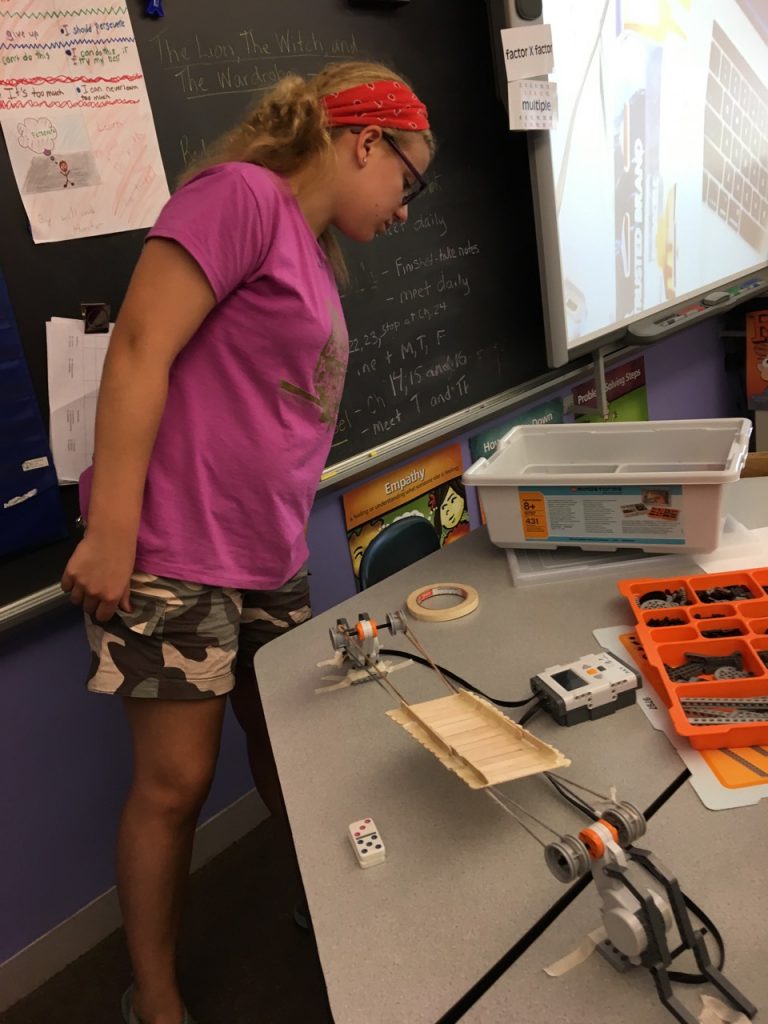
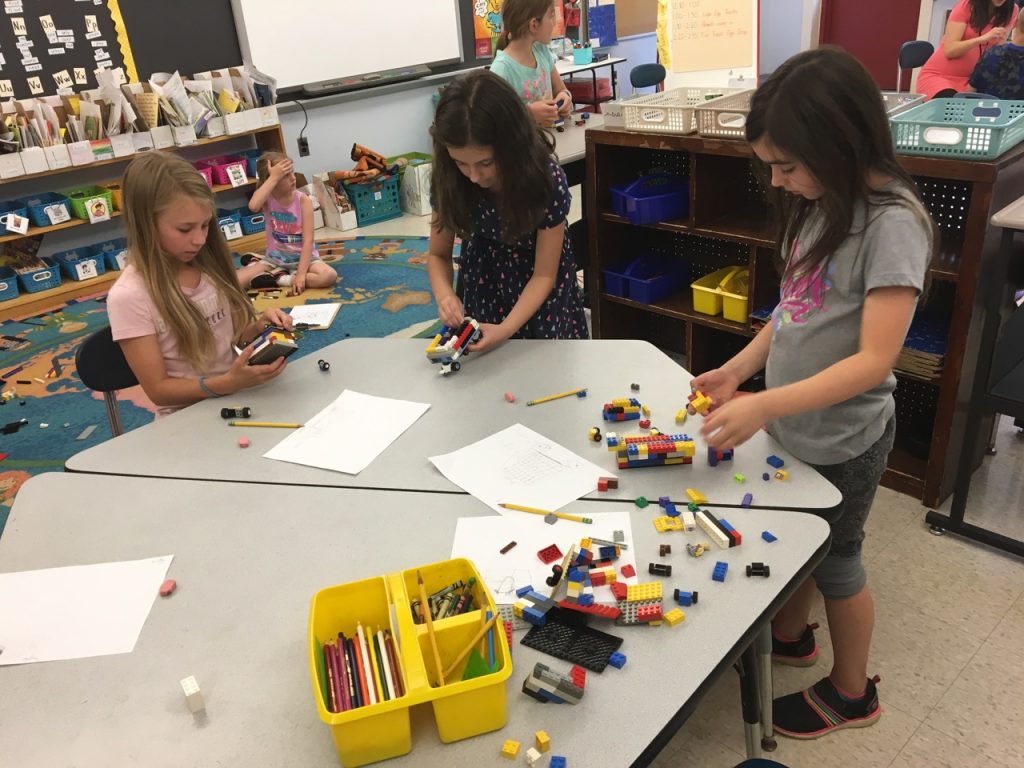
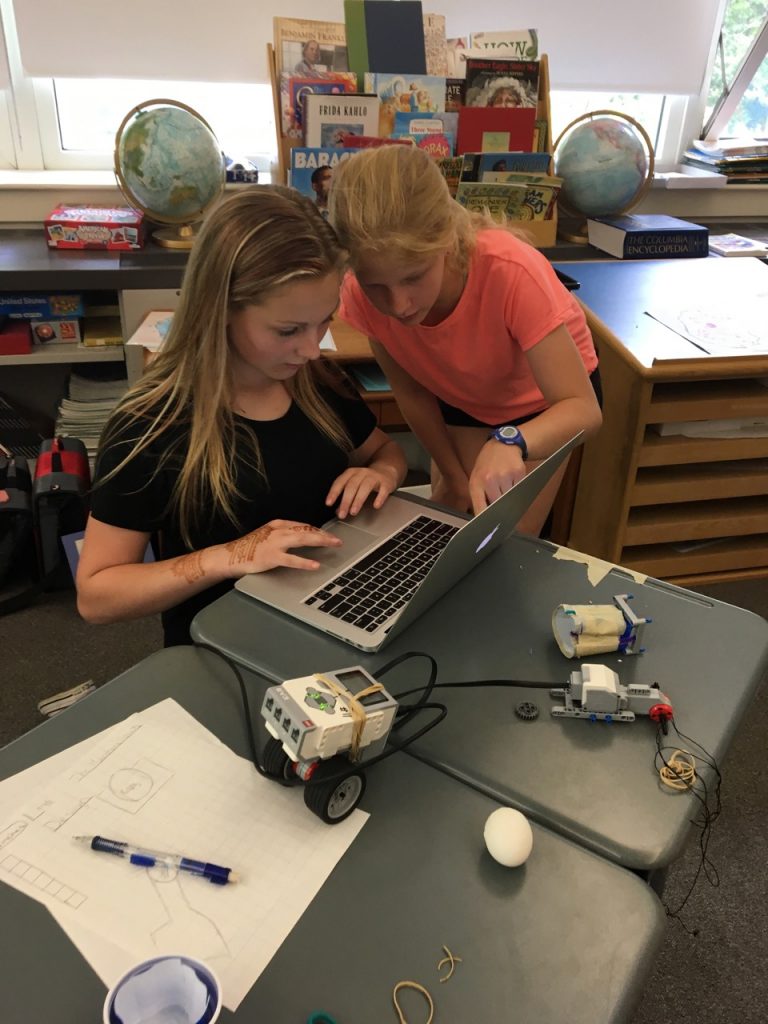
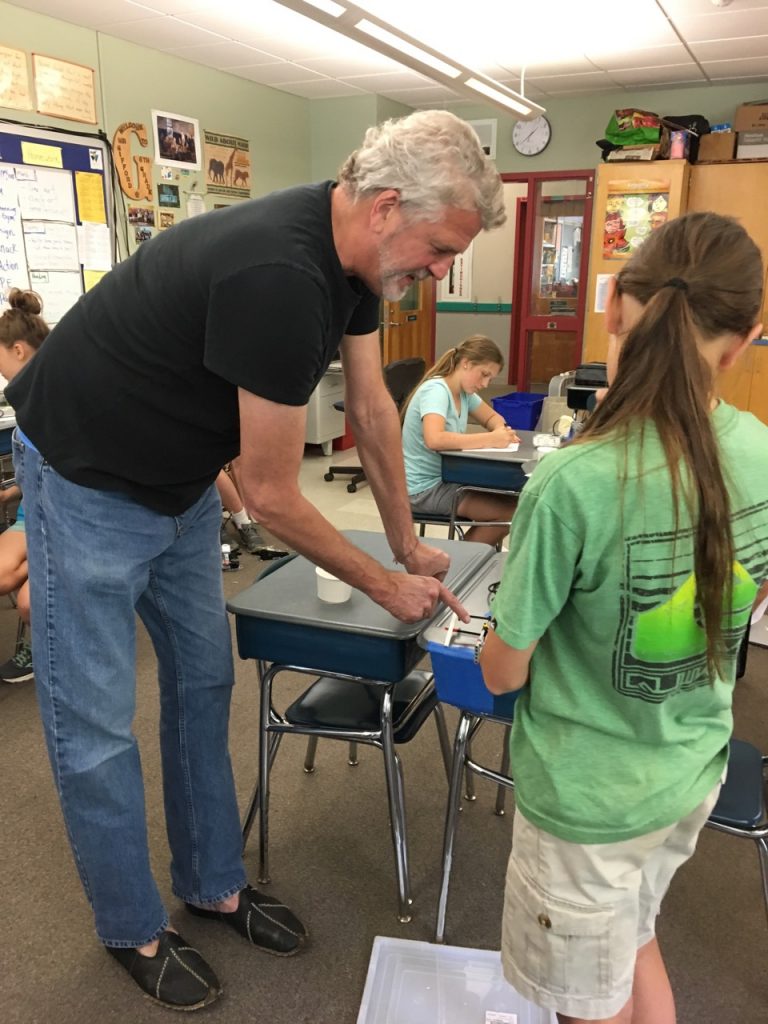
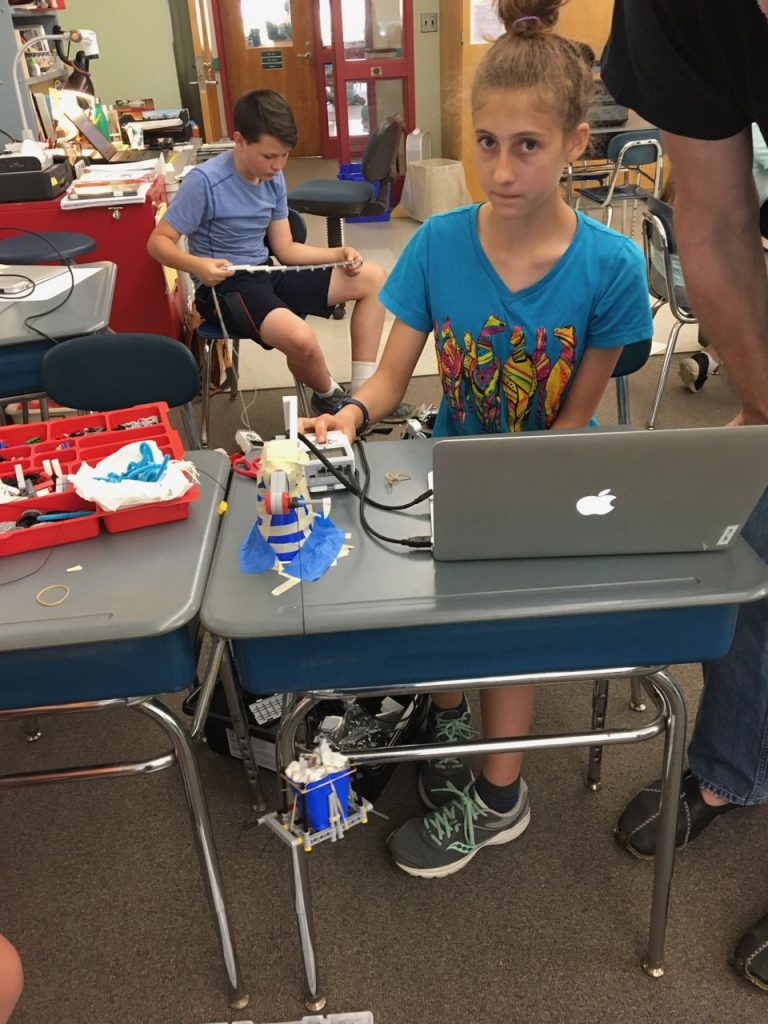
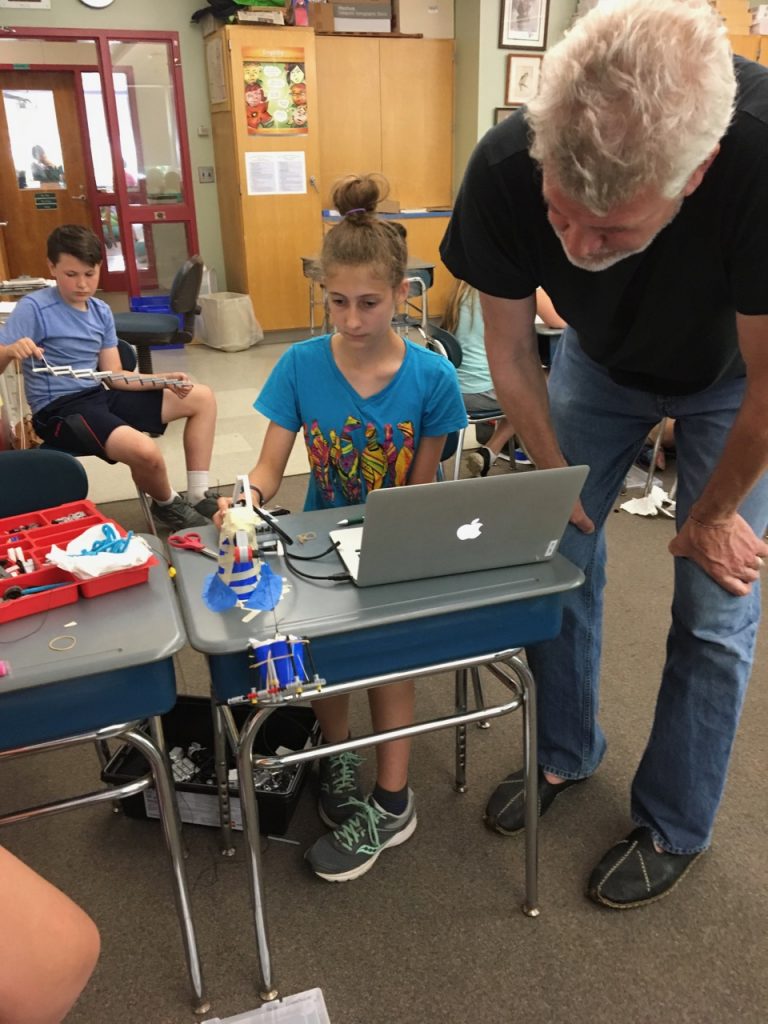
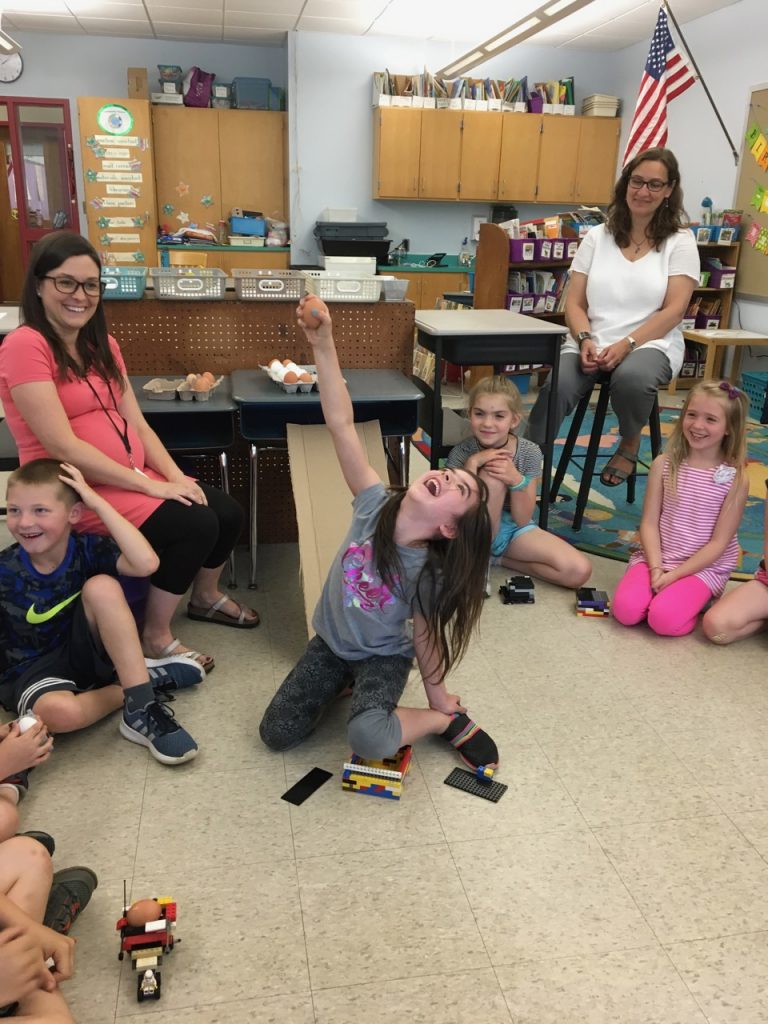
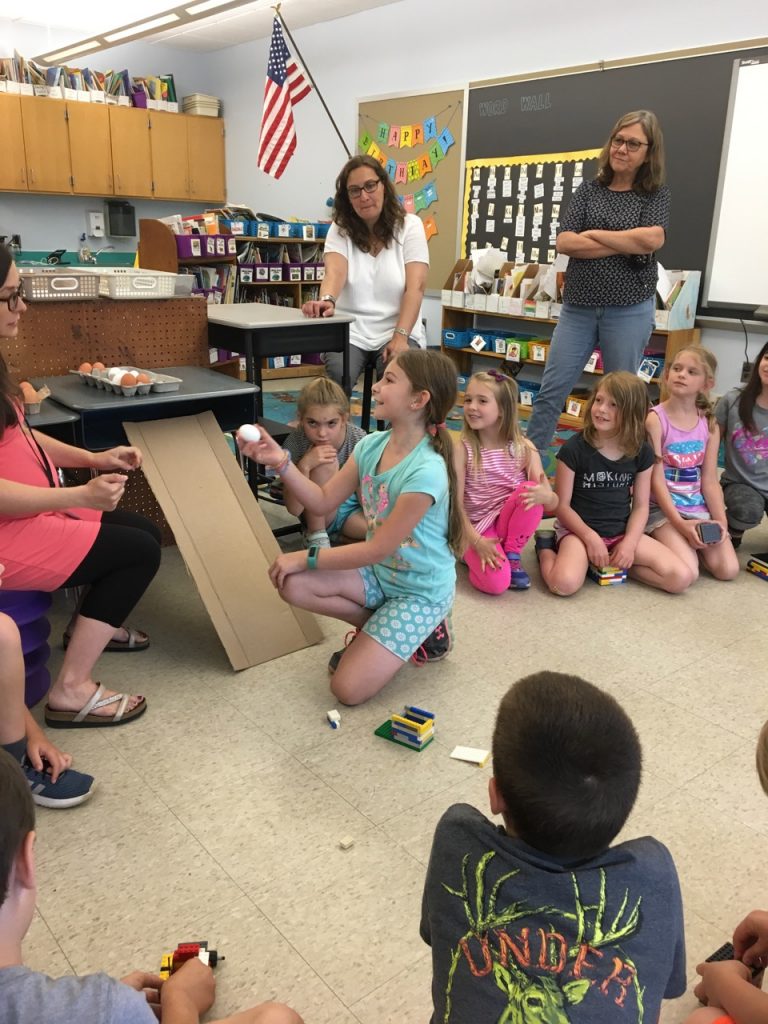
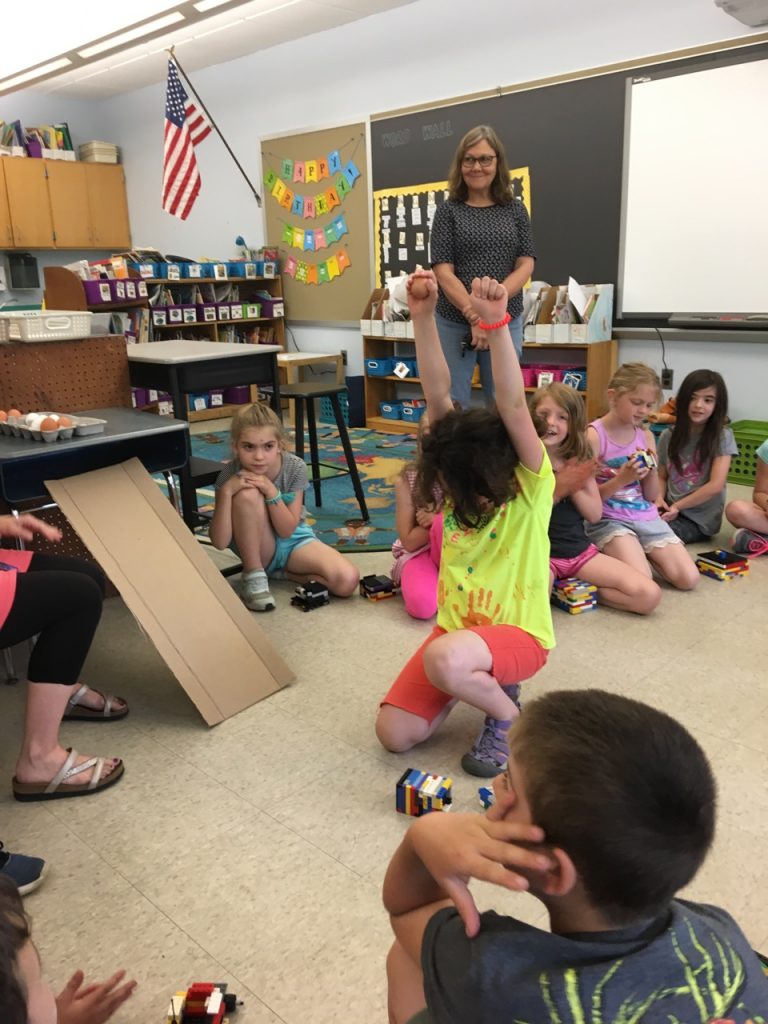
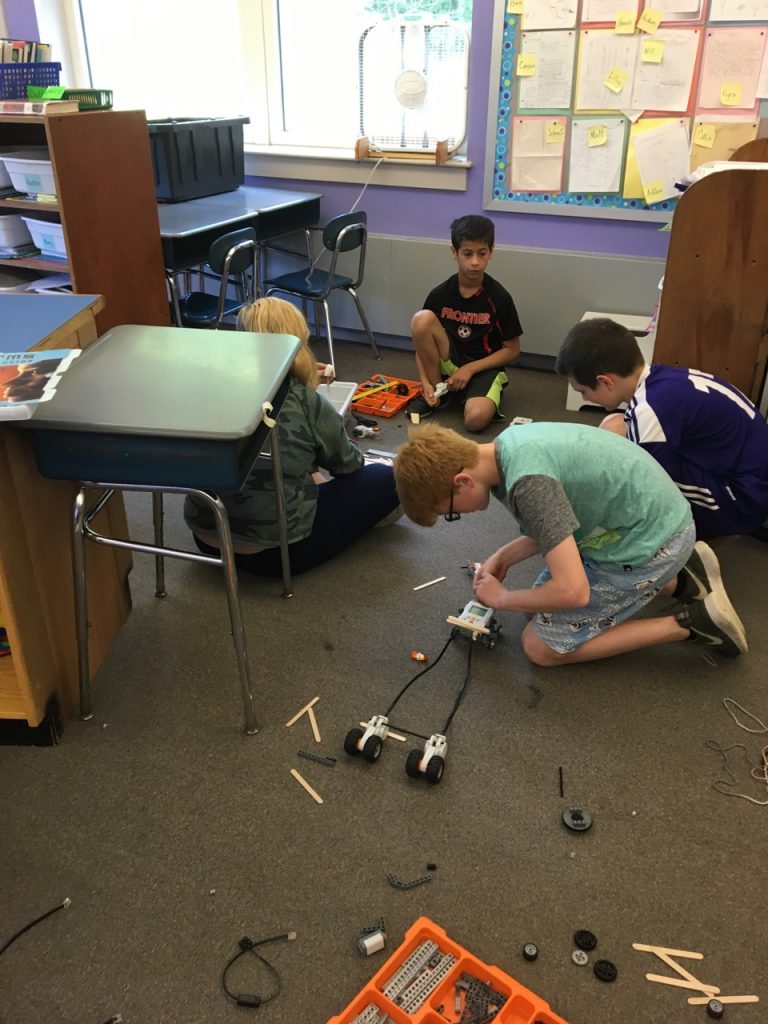
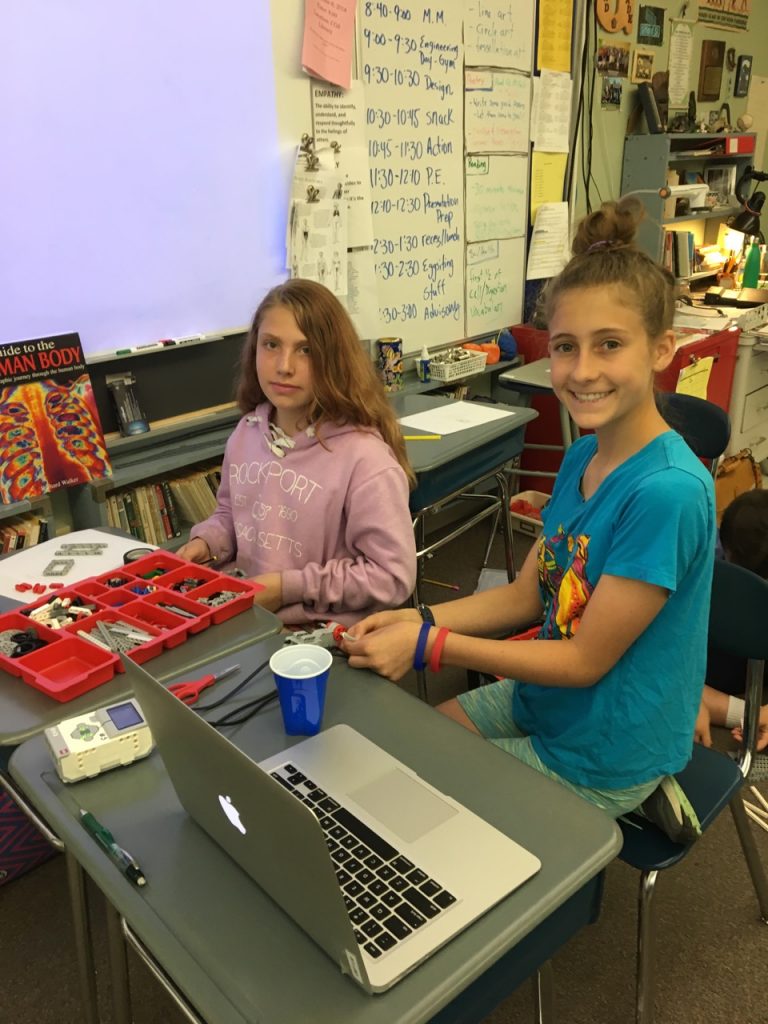


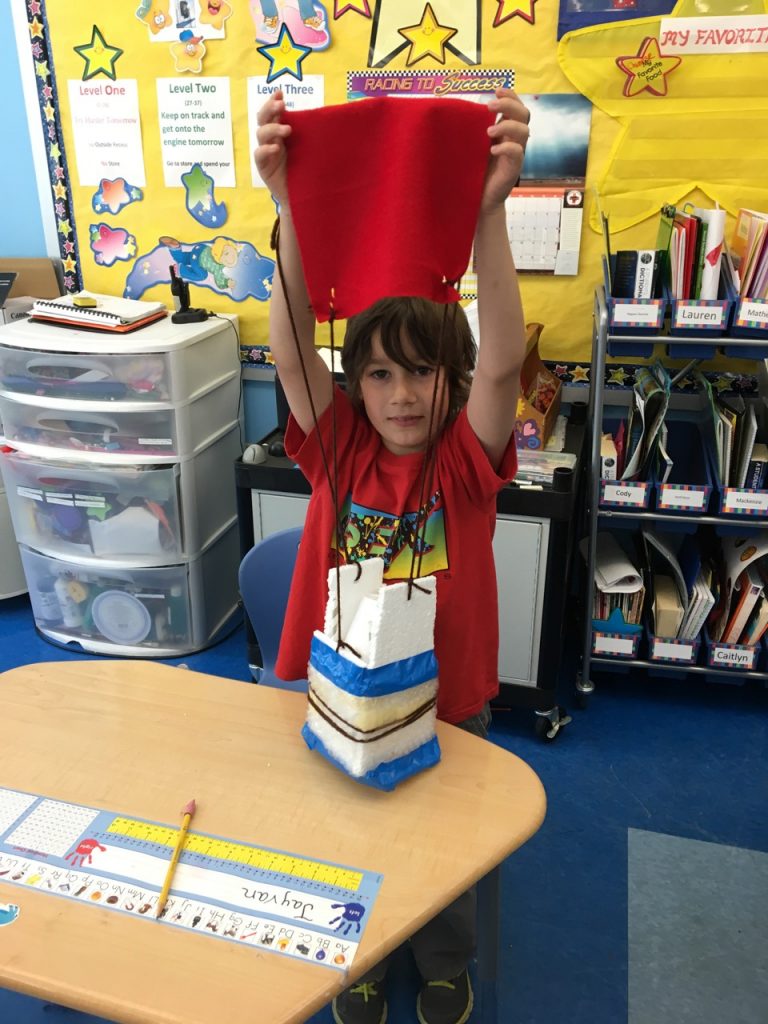
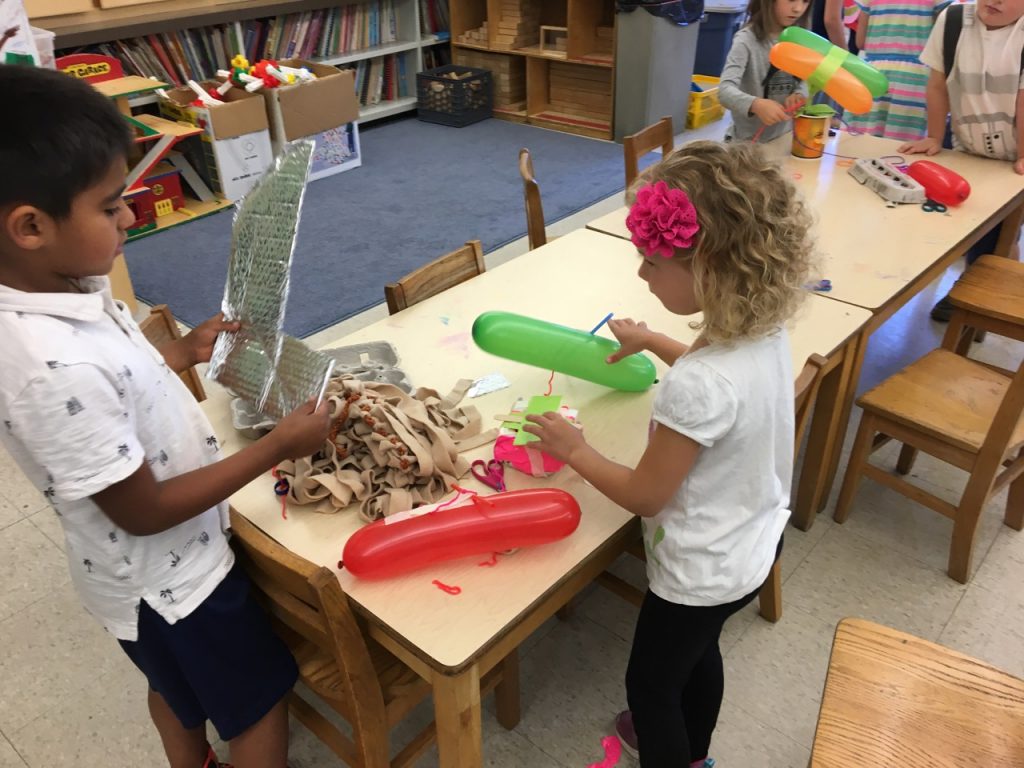
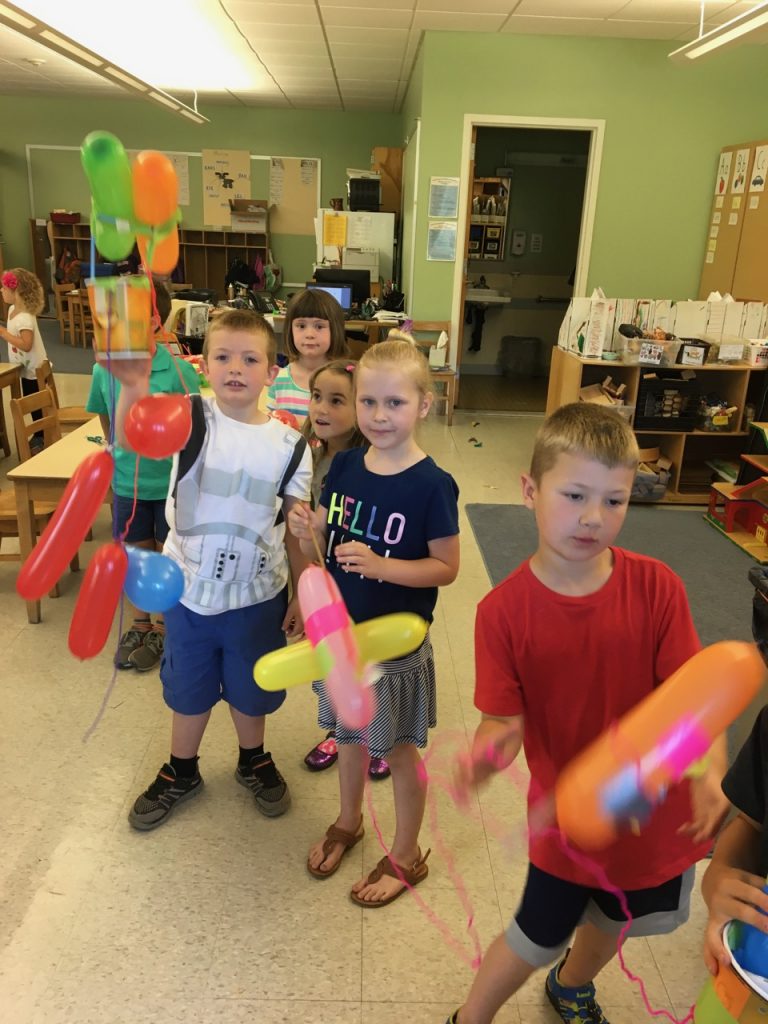

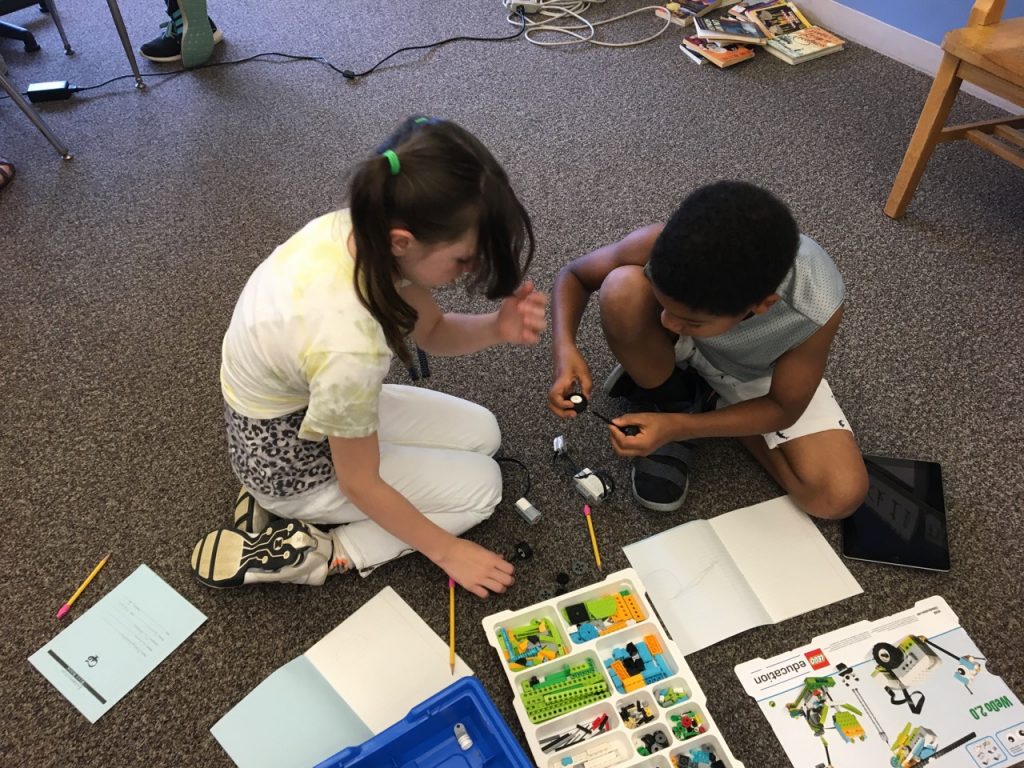
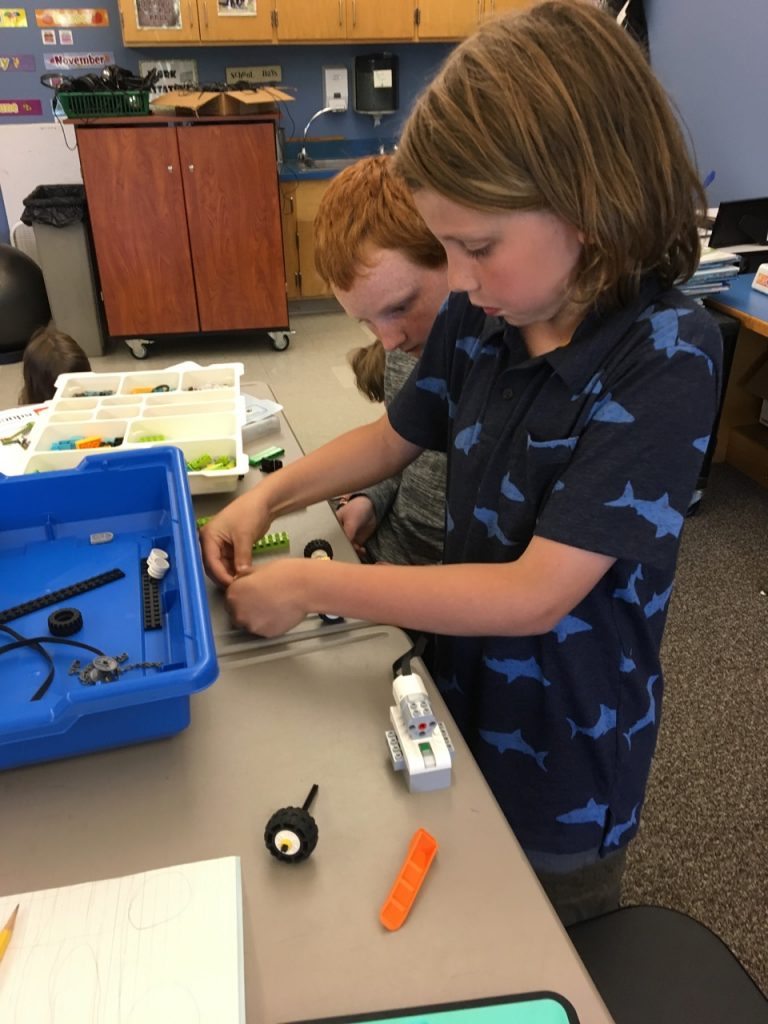
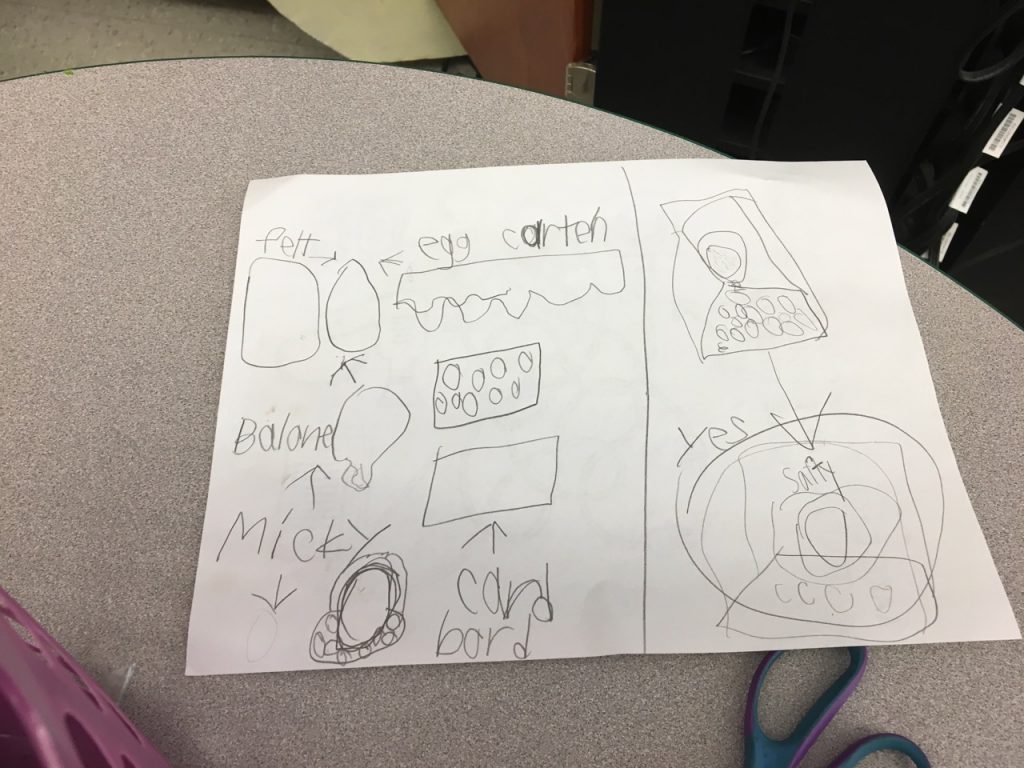
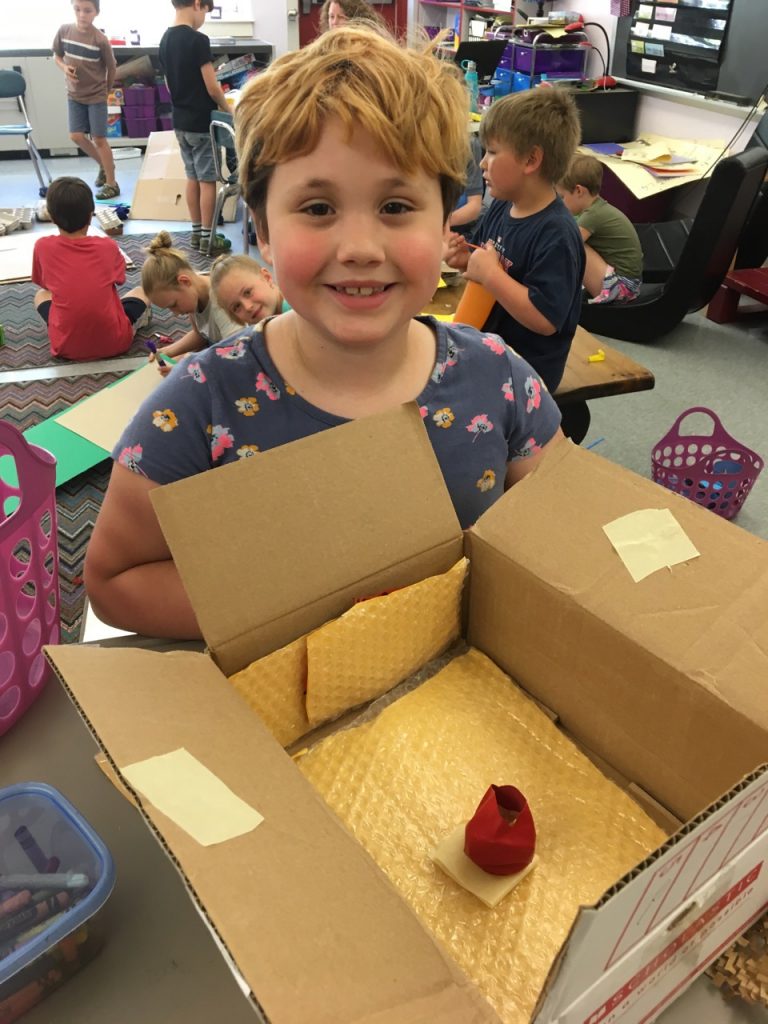
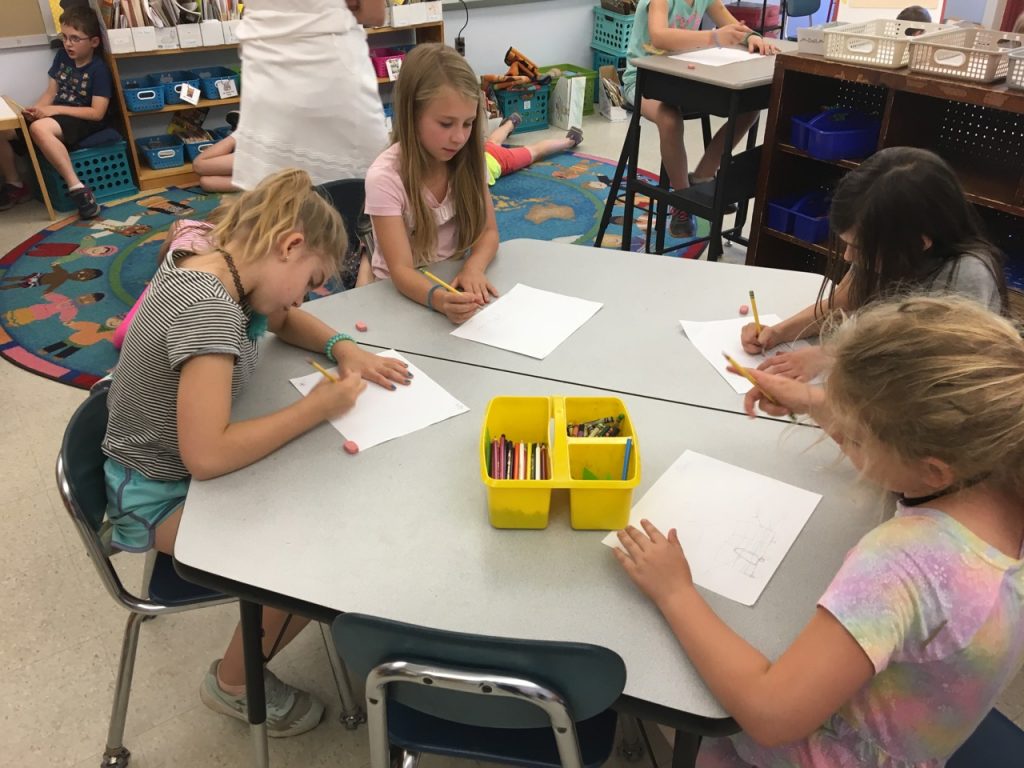

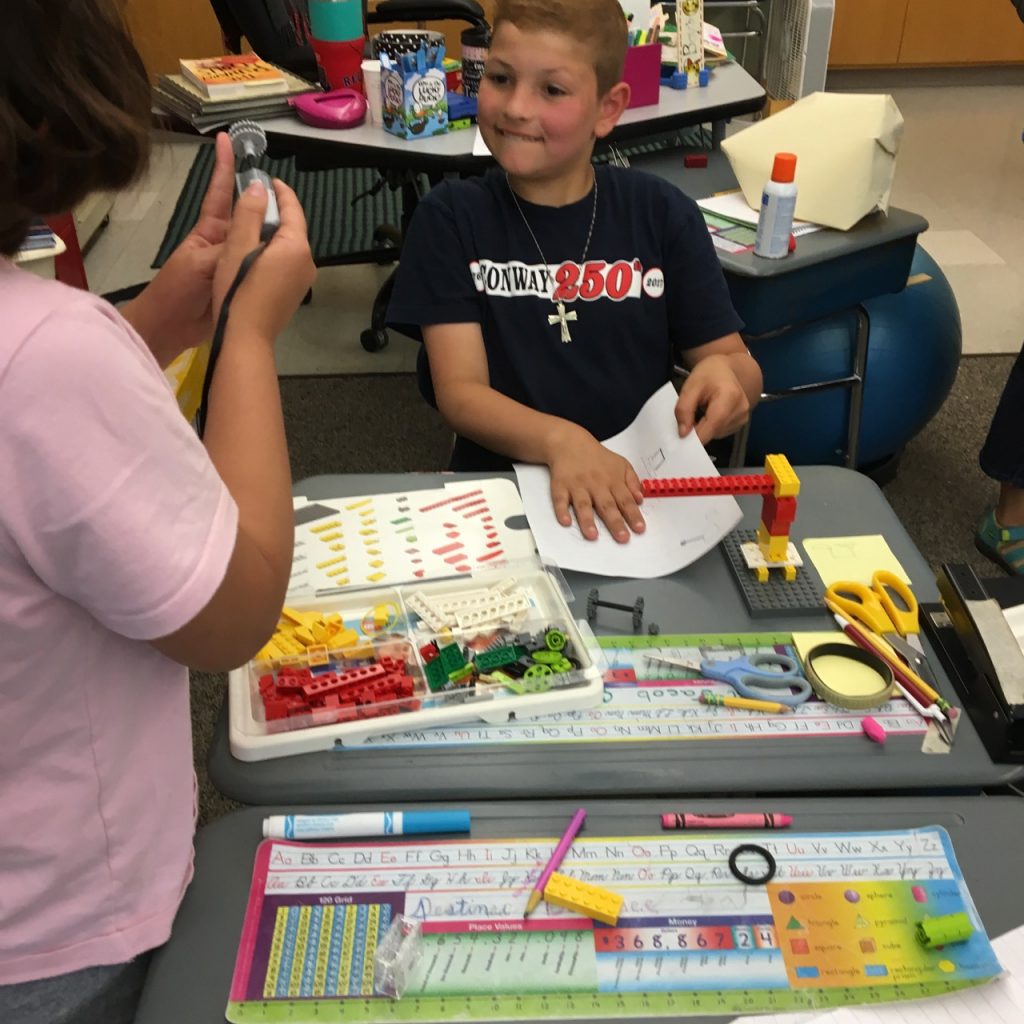
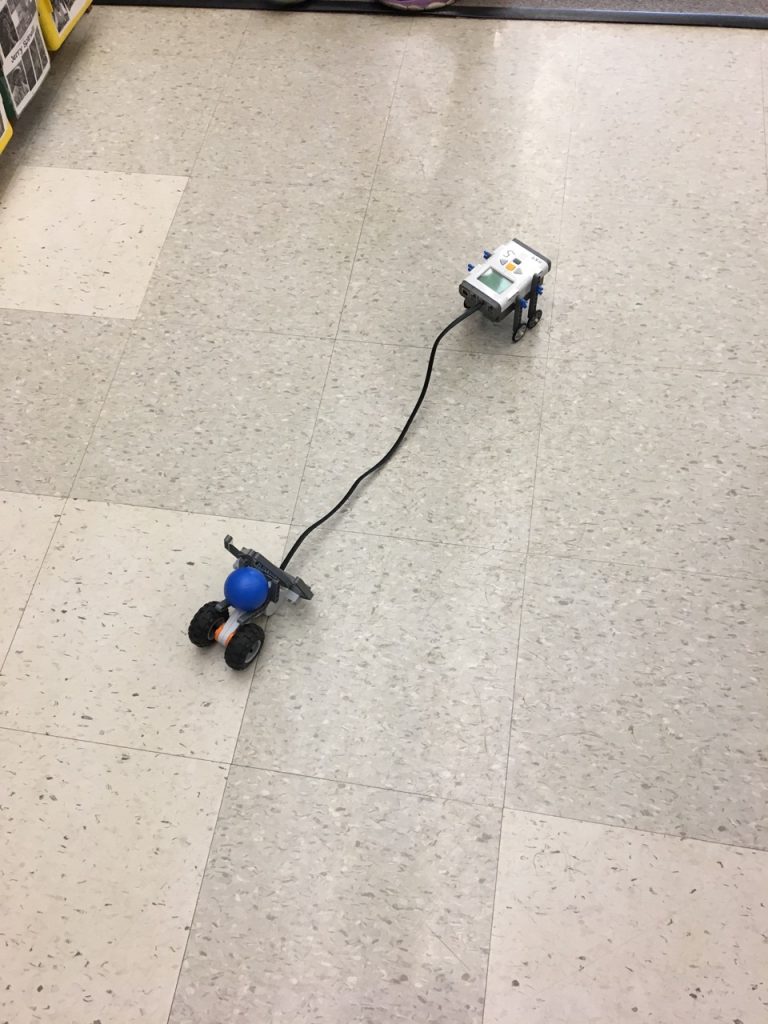
Posted in Robotics, Teaching, Technology
Leave a comment
LEGO Education Master Educator Meet Up with Mitch Resnick
I was recently honored to be named a LEGO Education Master Educator (and an advisor to the group). We met recently in Chicago for a day long event. I got to chat a bit and hear the keynote from Mitchel Resnick, known as the inventor of the Scratch programming language. He is the LEGO Papert Professor of Learning Research at the MIT Media Lab and has been advocating the concept of Lifelong Kindergarten, the idea of bringing playful and creative kindergarten attitude to the rest of school and, indeed, to life. Unfortunately, the push now is in the opposite direction, of pushing play out of kindergarten. Mitchel is the intellectual heir to his mentor Seymour Papert, who pioneered the notion of educational technology with his LOGO programming language. Papert also came up with the notion of constructionism, the idea that children create knowledge best in the context of creative hands on activities. Resnick has created a model of projects, passion, play, and peers to help illustrate and define his notion of lifelong kindergarten. Both Papert and Resnick has inspired my own practice of creating K-6 engineering experiences and also intensively studying the engineering processes of elementary children.
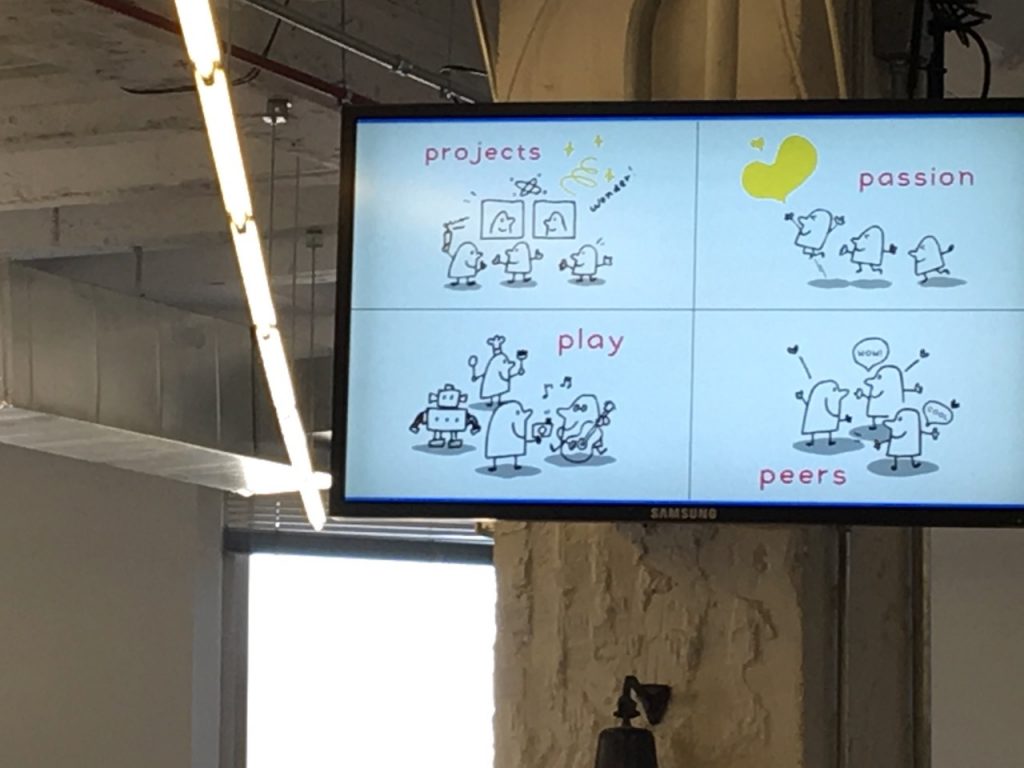


Posted in Child Development, Research, Robotics, Teaching, Technology
Leave a comment
PAEMST – Presidential Awards for Excellence in Math and Science Teaching
I received this award a few years back and I encourage others to apply. It’s a great experience to video yourself, really analyze what you are trying to do, and get feedback from the NSF reviewers. Here’s some info on the award.

The Presidential Awards for Excellence in Mathematics and Science Teaching (PAEMST) are the highest honors bestowed by the United States government specifically for K-12 mathematics and science (including computer science) teaching. The 2017-2018 nomination and application period for K-6th grade is currently open.
The awards were established by Congress in 1983. The President may recognize up to 108 exemplary teachers each year. Awards are given to teachers from each of the 50 states, the District of Columbia, the Commonwealth of Puerto Rico, the Department of Defense Education Activity schools, or the U.S. territories as a group (American Samoa, Guam, the Commonwealth of the Northern Mariana Islands, and U.S. Virgin Islands). PAEMST recognizes those teachers who develop and implement a high-quality instructional program that is informed by content knowledge and enhances student learning. Since the program’s inception, more than 4,700 teachers have been recognized for their contributions in the classroom and to their profession. Presidential awardees receive a certificate signed by the President; a trip to Washington, D.C. to attend a series of recognition events and professional development opportunities; and a $10,000 award from the National Science Foundation (NSF). The National Science Foundation administers PAEMST on behalf of The White House Office of Science and Technology Policy.
Please consider nominating a talented science or mathematics teacher using the PAEMST website today. If you are interested in applying yourself, you can begin an application at www.paemst.org. The 2016-2017 nomination deadline is April 1, 2018, and the application deadline is May 1, 2018.
Posted in Research, Robotics, Teaching, Technology
Leave a comment
Two Speeds at Once
This photo shows one of the common issues I see with our grade 6 make your own dragster project. Frequently, kids try to have different wheels on the same car go at two different speeds at the same time. Not sure if this has to do with causal reasoning or a lack of structural knowledge of gearing or something else.
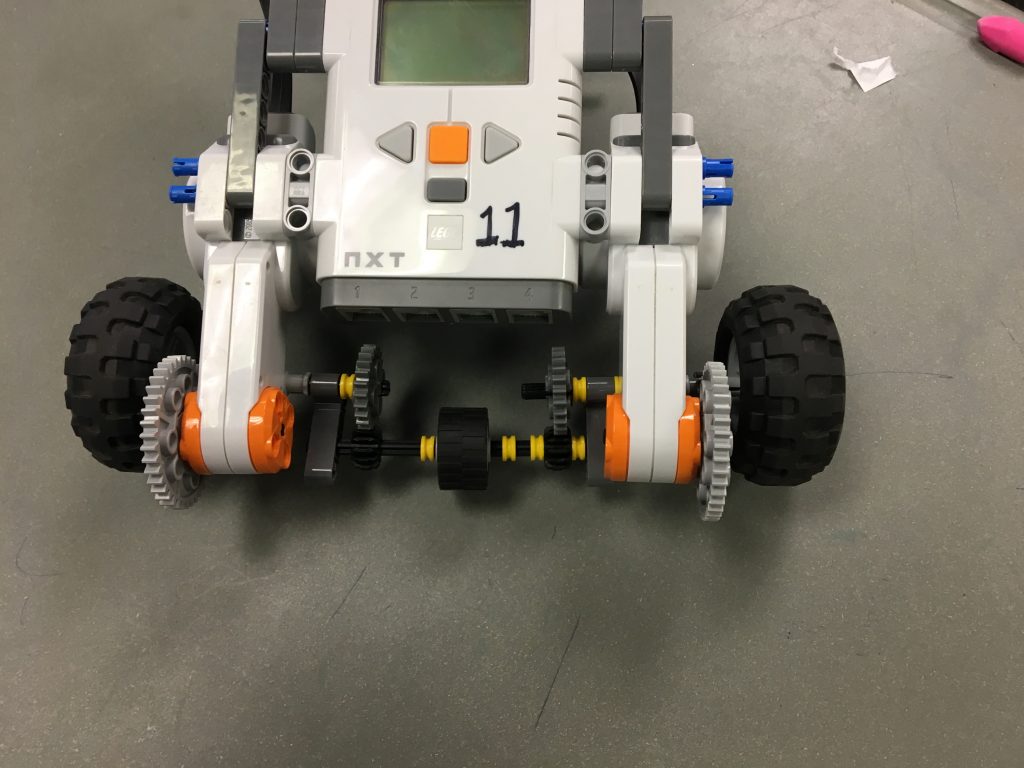
Posted in Child Development, Research, Robotics, Teaching, Technology
Leave a comment
Empowering Kids to Create with Technology – STEAM, Maker, & Design
Posted in Teaching, Technology
Leave a comment
New versus Old Tech Labs
We recently went back to our old building as a staff to see how far we have come. Here are photos of our new and old tech labs. Can you identify the newer lab?
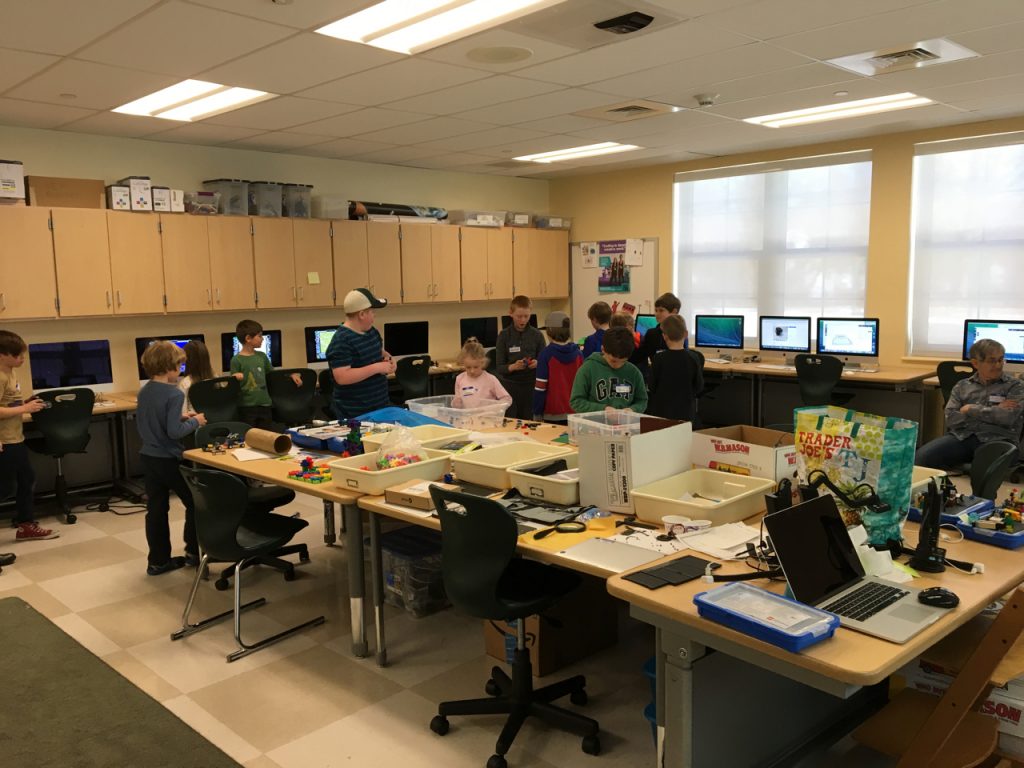
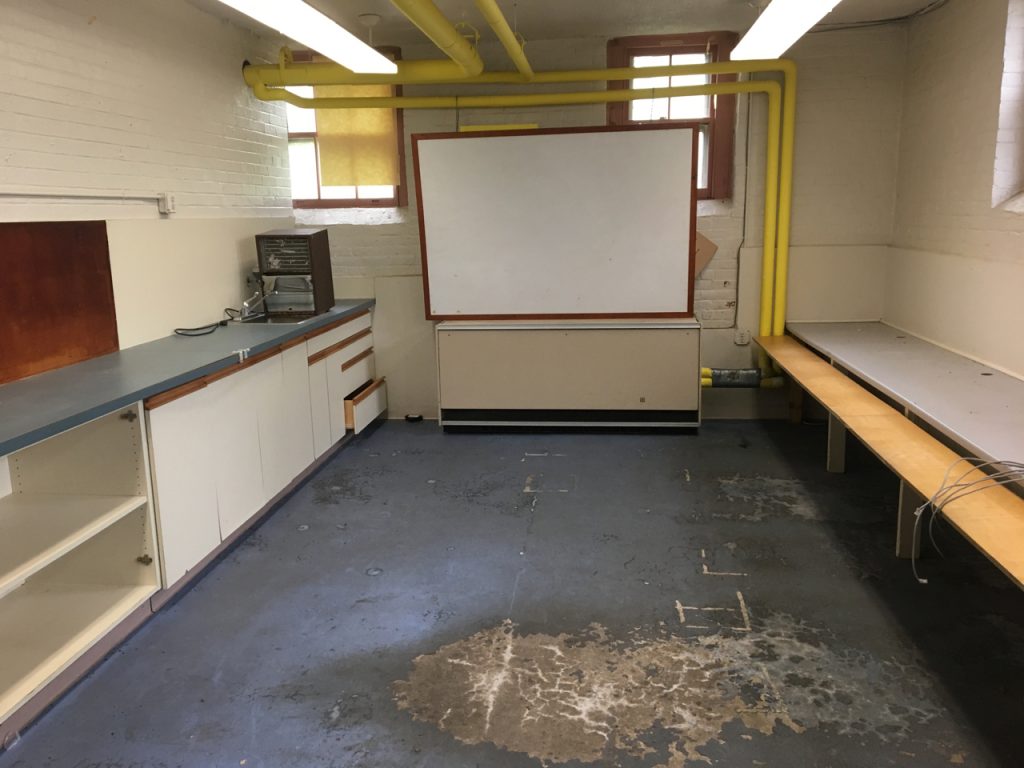
Posted in Teaching, Technology
Leave a comment

